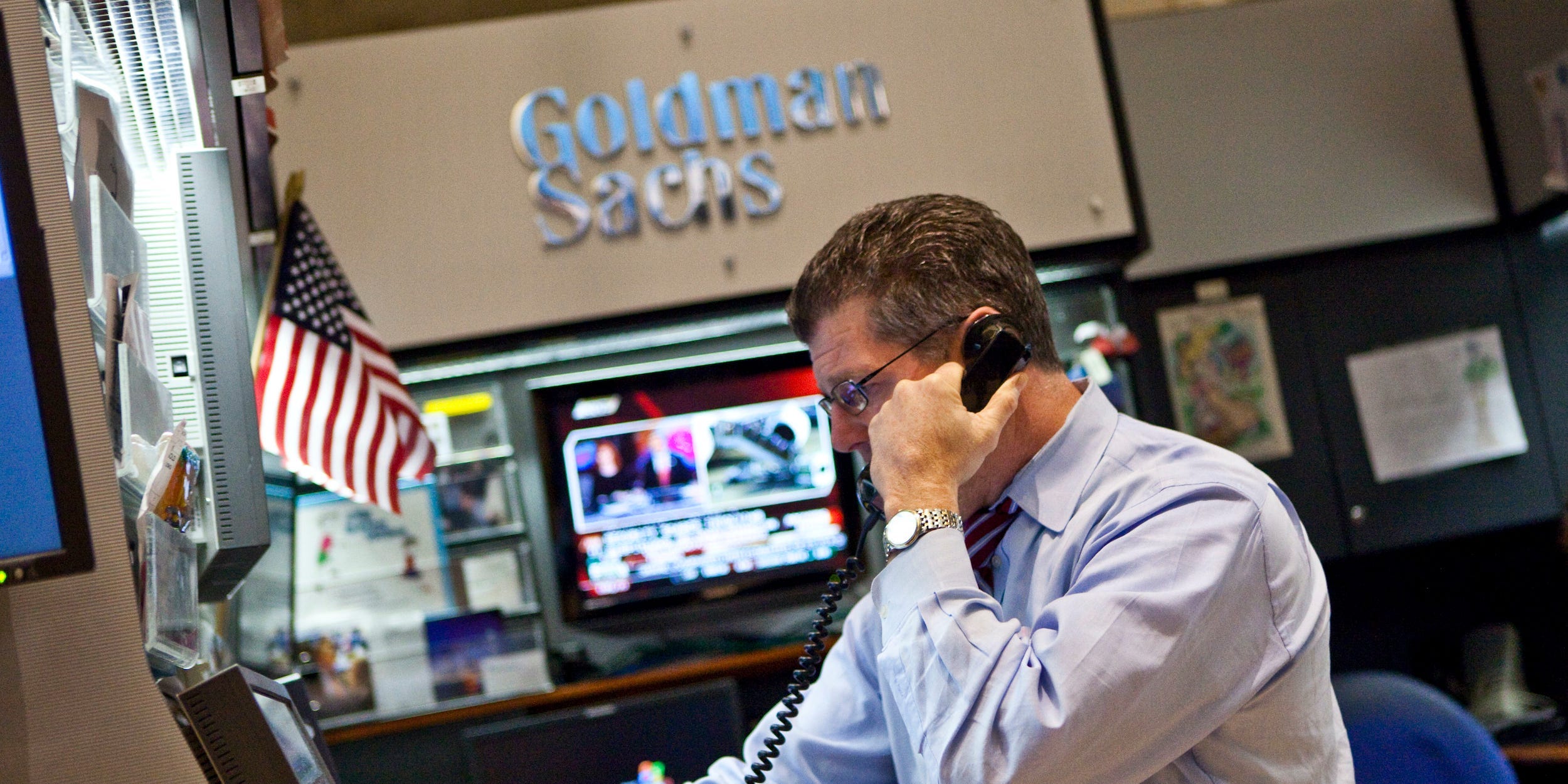- Goldman Sachs said in a note Thursday the S&P 500 can hit 3,600 if markets price in the bank’s “comparatively more optimistic US GDP forecast.”
- The bank’s strategists Dominic Wilson and Vickie Chang say if the economy contracts by only by 5% in 2020, and grows by 6.2% next year, then real yields will rise sharply to levels of “cyclical optimism” in June.
- The US bank said in a note last week banks are underpricing a scenario that a vaccine will be developed by year-end and widely distributed by the first quarter of 2021.
- Visit Business Insider’s homepage for more stories.
The S&P 500 could hit 3,600 if markets price in a “comparatively more optimistic US GDP forecast,” Goldman Sachs said this week. That is almost 7% above where the index is currently trading.
In a note published Thursday, strategists Dominic Wilson and Vickie Chang said if the consensus forecast moves to its “comparatively more optimistic” forecast of a 5% contraction in 2020 and 6.2% growth next year, then real yields will rise sharply back to levels that prevailed at the peak of cyclical optimism back in June.
The bank uses a US growth factor that it said saw a sharp upgrade during the early stages of the reopening process, but as a second wave of COVID-19 cases hit the country, the factor “reversed that earlier upgrade.”
The bank said: “Our US growth factor essentially stabilized at lower levels in late June, around the time that the worst-affected US states implemented more serious measures to control the virus spread. Over the last two weeks, our US growth factor has picked up quite sharply again and is now back around the highs that prevailed at the start of June.”
Goldman Sachs echoed its previous comments made last week that markets are underpricing that a vaccine will be produced end of this year and be widely distributed by the second quarter of 2020.
Expectations of a vaccine being developed sooner than expected also prompted the bank to raise its US GDP forecast for next year up from 5.6 to 6.2% earlier this week.
"Recently, there has been some improvement in US case growth news, and US data have been a little better than original expectations of softer growth after the partial reversals in reopening in parts of the country," Goldman Sachs said.
It added: "But we think the shifts in growth pricing also likely reflect increased optimism about prospects for an early vaccine. Our own US growth forecasts, which were upgraded earlier this week, now incorporate a vaccine approval by the end of 2020, and widespread distribution by the end of 2021 Q2 as the central case."
The S&P 500 closed at 3,380.35 on Thursday, a whisker away from Wednesday's all-time high close. It has increased about 51% since touching three-and-a-half year lows at 2,237.40 in March at the depths of the market turmoil over the coronavirus crisis.
The index's explosive upward correction has been attributed to investors assessing the type of economic recovery that awaits in a post-COVID-19 world. They also remained quite sensitive to news on progress of vaccines, as well as central banks rolling out different stimulus packages to help companies and businesses survive the crisis.
Goldman Sachs' most recent S&P 500 prediction is in line with those of other renowned market strategists.
Market bull Ed Yardeni said this week that unprecedented stimulus and stocks' bullish trend will drive stocks up another 5% by the end of this year, and another 14% by the end of 2021.
The veteran market watcher has turned optimistic about the stock market again, after having recently told Business Insider stocks could fall 15-20% if tensions between the US and China persist and the US economy does not recover before 2022.










